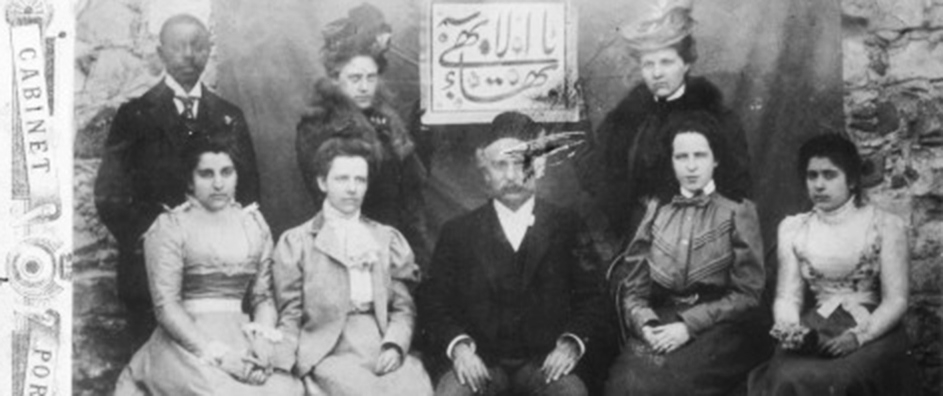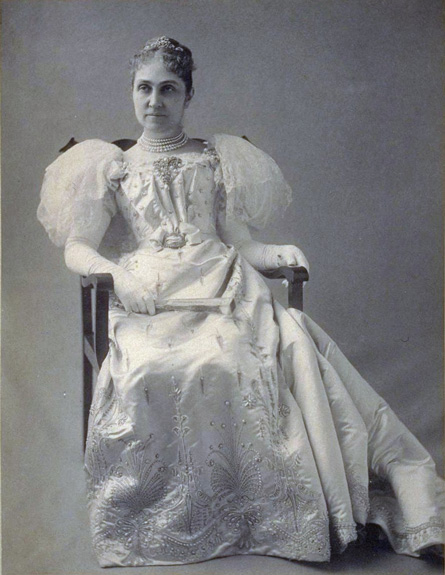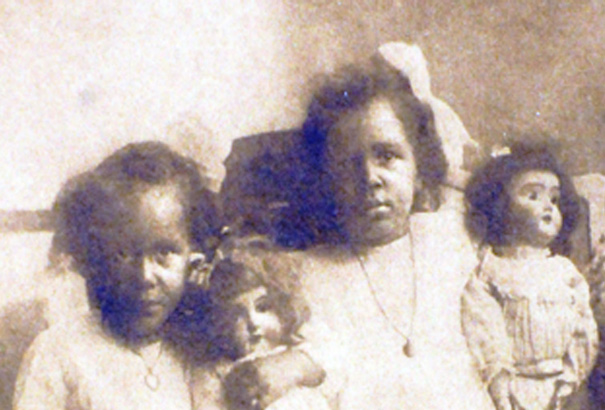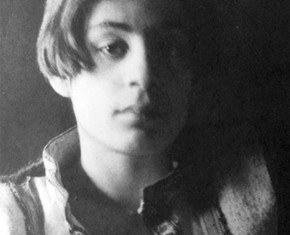The views expressed in our content reflect individual perspectives and do not represent the authoritative views of the Baha'i Faith.
The Guardian of the Baha’i Faith, Shoghi Effendi, honored Robert Turner (1855–1909), posthumously, as one of the nineteen “Disciples of Abdu’l-Baha.” For 35 years, Turner faithfully served as butler to Phoebe Apperson Hearst (1842–1919), nicknamed “Rosebud,” wife of Senator George Hearst, and mother of newspaper magnate William Randolph Hearst.
On February 20, 1899, Robert Turner met Abdu’l-Baha in Haifa, Palestine (now Israel), when Phoebe Hearst took the first group of Western pilgrims to meet Abdu’l-Baha in the Holy Land. May Maxwell, in An Early Pilgrimage (1917), tells the story:
On the morning of our arrival, after we had refreshed ourselves, the Master [Abdu’l-Baha] summoned us all to Him in a long room overlooking the Mediterranean. He sat in silence gazing out of the window, then looking up He asked if all were present. Seeing that one of the believers was absent, He said, “Where is Robert?” This was a coloured servant, whom one of the pilgrims in our party, in her [Phoebe Hearst] generosity, had sent to ‘Akka. In a moment Robert’s radiant face appeared in the doorway and the Master rose to greet him, bidding him be seated, and said, “Robert, your Lord loves you. God gave you a black skin, but a heart white as snow.”
In Part 6, we also looked at Abdu’l-Baha’s use of Baha’u’llah’s racially-positive metaphor, “pupil of the eye,” enshrined in the Arabic text of Abdu’l-Baha’s Tablet to Robert Turner. We have a similar expression in English, in fact.
There is a parallel meaning in the English word, “pupil,” as it relates to the eye. The Oxford English Dictionary explains that the Latin root word pupilla, which means female child, can also mean “doll” – “on account of the small reflected image seen when looking into someone’s pupil.” Abdu’l-Baha commented on this meaning when he said:
In this black pupil you see the reflection of that which is before it, and through it the light of the Spirit shines forth. – Abdu’l-Baha in London, p. 68.
Thus, these linguistically parallel Persian and English wordplays trace back to their respective word-origins. As previously mentioned, there appears to be a word-play in Abdu’l-Baha’s employment of “pupil of the eye” as a metaphor for people of African descent in which, collectively, these peoples ideally serve as the “eye-person” illumining the world’s social conscience.
Did this racially-honorific metaphor by Abdu’l-Baha exist in splendid isolation? No. Abdu’l-Baha invoked this idealizing likeness quite often. In America, Abdu’l-Baha evidently used this expression on a number of other occasions, and similarly used this same metaphor in his “Tablets” (correspondence). Take, for instance, Abdu’l-Baha’s Tablet to a “Mrs. Pocahontas,” in Washington, DC:
Render thanks to the Lord that among that race thou art the first believer, that thou hast engaged in spreading sweet-scented breezes, and hast arisen to guide others. It is my hope that through the bounties and favours of the Abha Beauty thy countenance may be illumined, thy disposition pleasing, and thy fragrance diffused, that thine eyes may be seeing, thine ears attentive, thy tongue eloquent, thy heart filled with supreme glad-tidings, and thy soul refreshed by divine fragrances, so that thou mayest arise among that race and occupy thyself with the edification of the people, and become filled with light.
Although the pupil of the eye is black, it is the source of light. Thou shalt likewise be. The disposition should be bright, not the appearance. Therefore, with supreme confidence and certitude, say: “O God! Make me a radiant light, a shining lamp, and a brilliant star, so that I may illumine the hearts with an effulgent ray from Thy Kingdom of Abha…. – Tablet to Mrs. Pocahontas
The original Persian for Abdu’l-Baha’s statement, “Although the pupil of the eye is black, it is the source of light,” can be read aloud, as follows:
Mardumak-i dīdih har-chand laun sīyāh-rā darad valī ma‘dan nūr ast.
(My thanks to my partner in life, Nahzy Abadi Buck, for assisting me in reading the Tablet, which is mostly in Persian, yet ends with a short prayer in Arabic.)
According to Baha’i historian Fadil Mazandarani, whom Abdu’l-Baha sent to America in 1920, “Mrs. Pocahontas” was a black woman. This is likely Mrs. Pocahontas Pope, seamstress of the sister of Pauline Knobloch Hannen, an early Baha’i of the Washington, DC, Baha’i community, who, along with her extended family, were the first Baha’is to teach the Faith, in earnest, to African Americans. Pocahantas’ husband was Rev. John W. Pope, a friend of the Faith, who died in or around July 1919. Pocahantas passed away in 1935.
Abdu’l-Baha’s statement, “Render thanks to the Lord that among that race thou art the first believer,” likely refers to the fact that “Mrs. Pocahontas” was the first African American woman to become a Baha’i (around 1908). So, in Tablets to each of these early African American believers, Abdu’l-Baha’s “pupil of the eye” metaphor was a unique way of valuing racial diversity, expressing love and honoring the unique spiritual destiny of all people of African descent.
Akin to “spread the word,” it was Abdu’l-Baha’s intent to “spread the metaphor,” so to speak — long before “Black is beautiful” became popular in American culture.
©2014 by Christopher Buck.
You May Also Like
Comments



















http://www.dcbahaitour.org/place/?id=38